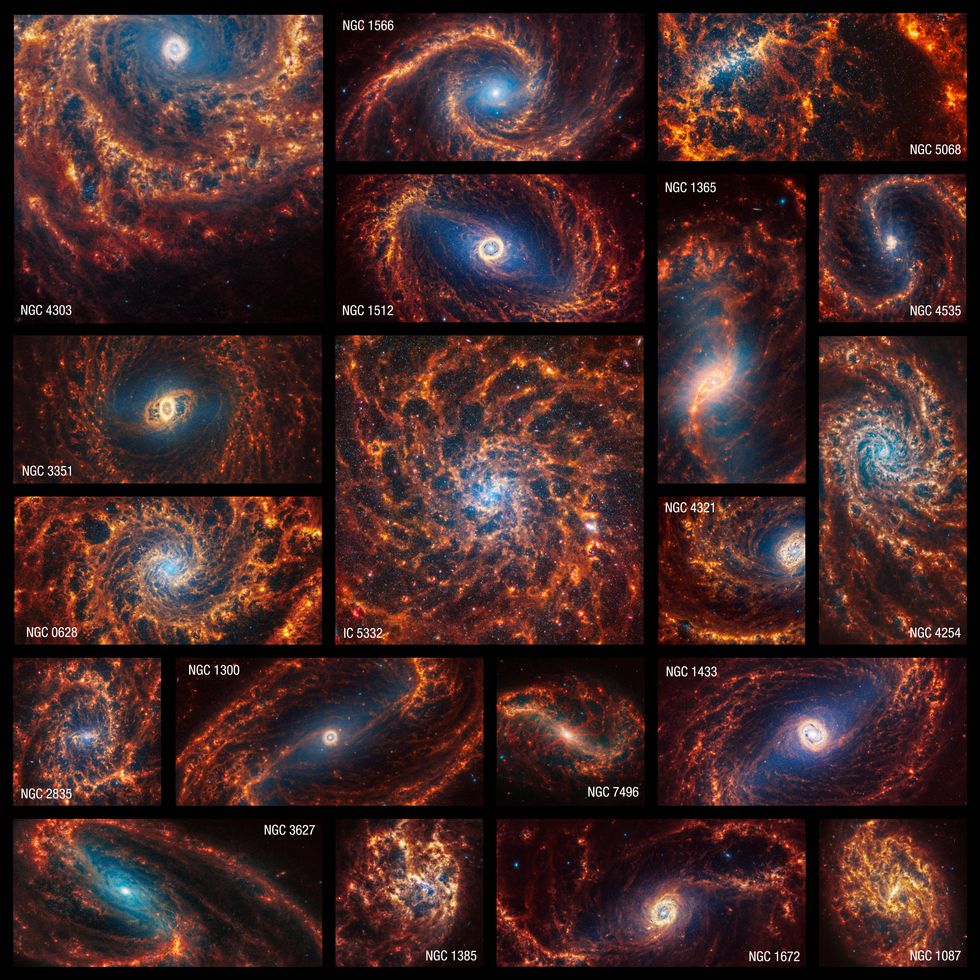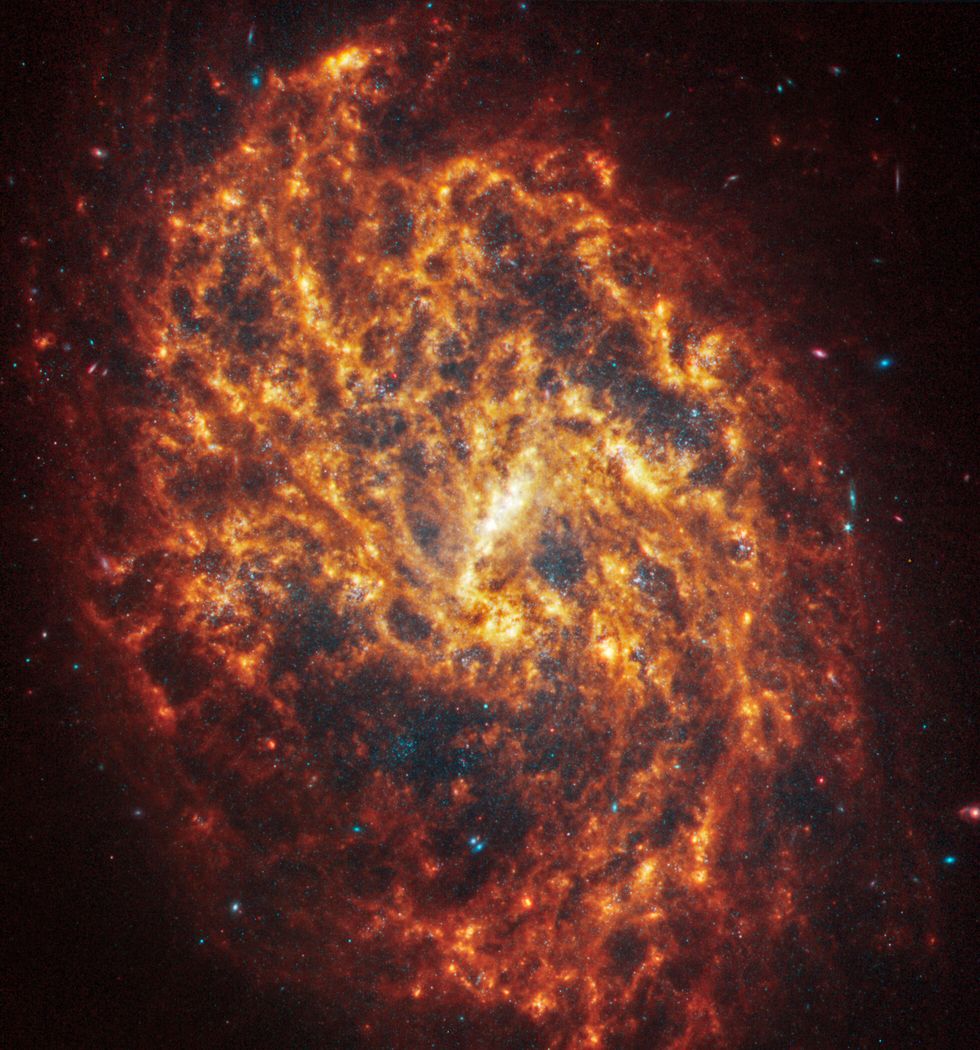
A treasure trove of images from the James Webb Space Telescope (JWST) showcases 19 spiral galaxies in never-before-seen detail.
The new set of pictures show stars, gas, and dust on the smallest scales observed.
Researchers are studying the images to uncover the origins and evolution of the intricate structures.
Following each of the galaxy’s clearly defined arms – which are brimming with stars – to their centres may reveal old star clusters and maybe even active supermassive black holes.

The newly released images are part of a large, long-standing project, the Physics at High Angular resolution in Nearby GalaxieS (PHANGS) programme, which is supported by more than 150 astronomers worldwide.
Webb’s near-infrared camera (NirCam) captured millions of stars which sparkle in blue tones in the images.Some are spread throughout the spiral arms but others are clumped tightly together in star clusters.
The telescope’s mid-infrared instrument (Miri) data highlights glowing dust and also spotlights stars that have not yet fully formed; they are still encased in the gas and dust that feed their growth, like bright red seeds at the tips of dusty peaks.
Astronomers were amazed to discover the images also show large, spherical shells in the gas and dust which may have been created by exploded stars.
Webb is the largest, most powerful telescope launched into space and is an international partnership between Nasa, the European Space Agency (Esa) and the Canadian Space Agency (CSA).













